On the Frontlines of Wildlife Care in Laos
News
Publish date: November 20, 2025
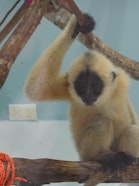
On the Frontlines of Wildlife Care in Laos
News
Publish date: November 20, 2025
In Laos, improving wildlife outcomes depends as much on systems as on single rescues. Through Hub Southeast Asia, the Wyss Academy for Nature works with the Lao Conservation Trust for Wildlife and the Elephant Conservation Center to co-design practical improvements—reliable transport for long routes, field-ready diagnostics, and hands-on training for Lao veterinarians. These changes are not just operational. They strengthen a wildlife health system that connects responders, universities, and authorities—so care is safer, knowledge is shared, and each rescue contributes to longer-term outcomes for nature and society.
“I used to think, ‘If we survive then we do. If we don’t, then we don’t,” is how Mr. Vue described rescue trips before the team could rely on safer transport. A typical wildlife rescue mission in Laos usually takes a day or two, though some cases can stretch to four days round trip, depending on road conditions and the increasing frequency of floods and landslides in the country.
For Vue, one of the most challenging aspects of the work was the commute to northern Laos, where narrow, slippery roads and the risk of landslides made every trip treacherous. “I would get anxious as soon as we received a call, and the worry would stay with me until the trip was over,” he recalled. “The old car was run-down— the brakes and headlights didn’t work properly, so we could hardly see when it rained.” Every journey felt like a test of endurance—never certain they would reach the animals or make it back safely.
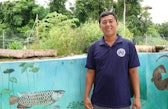
With more dependable logistics now in place—safer vehicles, better trip planning, and essential field equipment—the team travels with fewer delays and greater confidence. “Now I’m not worried when we go on a rescue mission—I’m happy, and we all feel much safer,” Vue said, highlighting how reliability on the road changes what is possible in wildlife rescue and care.
LCTW and the Elephant Conservation Center (ECC) are strengthening mobile wildlife care and coordination through WILDMED. This program equips field teams for longer trips and helps cover essentials—travel costs, medication, syringes and supplies, and basic diagnostics—so responders can focus on treatment and safe transport. It also underpins hands-on training and knowledge-sharing for the next generation of wildlife veterinarians in Laos.
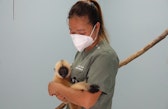
The Lao Conservation Trust for Wildlife (LCTW) relocated to its current site at the end of 2023, after its 30-year land lease expired. The new site, about a two-hour drive from Vientiane city center, is still under construction and requires significant infrastructure to accommodate more rescued wildlife. LCTW is one of the few organizations in Laos dedicated to the rescue, rehabilitation, and release of native species. “Anywhere we go, it’s always far. The team needs a place to sleep overnight, then there are travel costs, medication, all the syringes and supplies, and equipment like the microscope we carry with us—or even just batteries so we can use it in the forest,” explained Melody Bomon, LCTW’s veterinarian and WILDMED manager.
LCTW operates a hotline and Facebook page where people can report wildlife in need of rescue. Common cases include macaques, pangolins, and civets—often found crammed into cages far too small for them to move, leaving them injured. Pangolins in particular frequently arrive with facial and leg wounds from being confined in small bags.
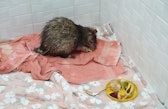
During our recent visit, the team witnessed an unusual case. “This is my first porcupine case,” said Sengtavanh “Seng” Xayyalat, the center's veterinarian. The porcupine had an injured tail and walked unsteadily, placing no weight on her right front leg. The tail eventually had to be amputated, and when Seng noticed the animal still could not walk properly, she suspected a broken leg. With no wildlife veterinarian available to evaluate the extent of the fracture on short notice, a medical doctor was called in to conduct an X-ray, which confirmed the diagnosis. The porcupine has since received treatment and was recovering at the center.
Seng joined the LCTW in December last year as the center's first locally hired veterinarian—a step LCTW advanced with support from WILDMED. She first became involved with the center during her fifth year of veterinary studies, when she attended a wildlife education course the center offered for Lao veterinary students. Today, the Wyss Academy for Nature continues to help sustain these courses, ensuring more young veterinarians in Laos gain knowledge and hands-on experience in wildlife care.

“Without continued support, veterinary students would have few opportunities to gain hands-on experience in wildlife care and rescue,” noted a lecturer from the National University of Laos. Limited resources mean students rarely have the chance to learn or practice wildlife treatment. Last year, resource constraints even paused the course, leaving some students without practical wildlife care training. Those who joined the program with LCTW highlighted its importance: it gave them a rare chance to treat wildlife, practice real-life rescue, and deepen their appreciation for nature. “We're the rescue center, but so much of the work we do is about education, just like this veterinary program. None of that is direct rescue, but it's all the bigger picture, right?” said Melody, reflecting on how training students and sharing knowledge may not be rescued in the immediate sense, yet it strengthens everything that makes rescue possible.
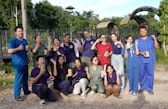
As LCTW’s director, Jeremy Phan emphasized that caring for individual animals is only one part of a broader system. Each rescue tells a larger story—about how ecosystems function and why every element matters. Through WILDMED, LCTW and its partners are translating that understanding into action: responding to emergencies, training the next generation of Lao veterinarians, and improving how wildlife health is managed across the country.
The Wyss Academy for Nature contributes through Hub Southeast Asia by helping partners strengthen the systems that make such work possible—from field logistics and veterinary training to knowledge exchange with authorities and universities. In doing so, it works toward the same purpose that guides all its collaborations: connecting grounded experience with the people and institutions that shape lasting outcomes for nature and society.
Looking ahead, the partners are capturing what works—safer routing protocols for remote response, basic diagnostic standards, and curricula that reflect real field needs—so learning can inform decision-making and investment. In practice, that is how wildlife health becomes durable: through capabilities, governance, and relationships that keep improving long after a single rescue ends.